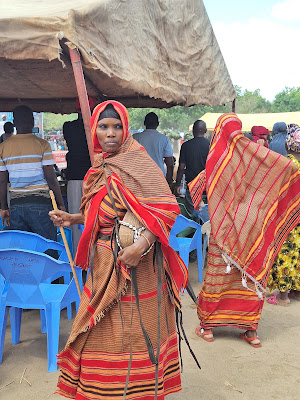For so many years, and in many fundraising posters and images, the picture portrayed of a refugee camp in Kenya is that of an establishment of hopeless, malnourished and naked children in a dusty and bare land. Some images show older people, mostly women lined up behind some fences, seemingly waiting for aid workers' help, who in this case are UNHCR officers. But that is not the factual reflection of a refugee camp. In reality, it is made up of so many things: different nationalities, schools, hospitals, markets, hotels, and even fish farms. A refugee camp like Kakuma, which has been in place for at least 30 years is a melting pot of cultures and a beehive of activities.
 |
| Reception area in Kalobeyei, Kakuma. |
This does not mean, however, that it is a pleasant place. As much as it is meant to be a place of protection and care for the thousands fleeing conflicts and persecution, it is also a mechanism of control where refugee lives are in constant risk of abuse, both by the host government's security officers and fellow refugees.
 |
| Kalobeyei Market where hosts and refugees buy and sell goods alongside one anothert.. |
It is a violent place where people are also deprived of basic human necessities such as food, water, and shelter. So, how do the Kakuma refugee camp and Kalobeyei Integrated Settlement look like. I travelled around the camp and the settlement and took a few pictures.
Natukobenyo Healthcare Center in Kalobeyei, serving both the hosts and refugee communities in Kakuma.
A refugee house in Kakuma refugee camp (2).

|
A permanent house built for refugees settled permanently in Kalobeyei Settlement.
|
|
|
|
|
.jpg) |
| An Ethiopian hotel owned by Ethiopian refugees located in Kakuma refugee camp 1 |
.jpg) |
| The Big Heart Girls' Secondary School in Kalobeyei where girls from both host and refugee communities learn. |



.jpg)
.jpg)

.jpg)



Comments
Post a Comment